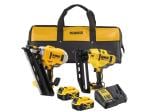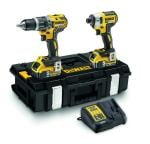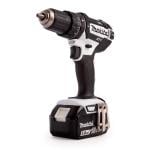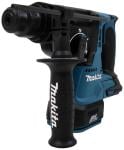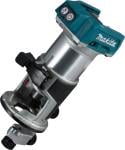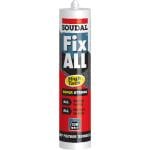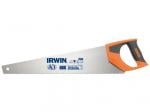Bolt Types & Bolt Sizes Explained
In the construction industry, bolts are one of the most essential fasteners. Usually, they are assembled with nuts. When working with machinery and equipment, using bolts with the right sizes is crucial. This article explains bolts in detail, including their definition, types, dimensions, and metric and imperial standard sizes.
What are Bolts?
The bolt is a type of externally threaded fastener used in conjunction with a nut. During assembly, the nut will not rotate, but will be tightened by turning it. An existing threaded hole can be inserted into the screw or the screw can pass through the material and form its own internal thread, which is tightened by applying torque to the head.
What is an Anchor bolt?
An anchor bolt is a fastener used to attach objects or structures to concrete. It typically consists of a threaded rod or bar with a hook or expansion anchor at one end, and is inserted into a hole drilled into the concrete. The anchor bolt is then secured in place using a nut and washer. Anchor bolts are used in a variety of applications, including the installation of structural supports for buildings, equipment mounting, and the attachment of structural elements to concrete foundations. They are designed to provide a secure connection between the concrete and the object being anchored, and are typically used in situations where the object needs to be held in place with a high degree of stability. Anchor bolts can be made from a variety of materials, including steel, stainless steel, and other high-strength alloys. The choice of material depends on the specific application and the loads that the anchor bolt will need to bear.
What is a Carriage bolt?
A carriage bolt is a type of fastener that is designed to be used in wood or other soft materials. It has a round head with a square neck underneath, which helps to prevent the bolt from turning when tightened. The bolt also has a smooth, cylindrical shaft with threads at one end. Carriage bolts are often used in the construction of furniture, decks, and other structures that require a strong, secure connection. They are commonly used in conjunction with wood screws and other fasteners to provide a strong, stable joint. To install a carriage bolt, the bolt is inserted through a hole in the wood and then tightened using a wrench or socket. The square neck of the bolt prevents the bolt from turning as it is tightened, ensuring that it stays securely in place. Once the bolt is tightened, the smooth, rounded head sits flush with the surface of the wood, providing a clean, finished appearance. What is an Elevator bolt? An elevator bolt is a type of fastener that is used to secure a pulley or sheave to a shaft. It has a small, cylindrical head with a flared base and a threaded shaft that is used to fasten the bolt in place. The head of the bolt is typically larger than the shaft, which allows it to sit flush against the pulley or sheave and distribute the load evenly. Elevator bolts are commonly used in conveyor systems, elevators, and other types of machinery where there is a need to transmit rotational force between two components. They are typically made of steel or other high-strength metal and are designed to withstand the high loads and stresses that are commonly encountered in these types of systems.
What is a Hex bolt?
A hex bolt is a type of fastener that is characterized by a hexagonal head and a threaded shaft. It is designed to be tightened and loosened with a wrench or socket, and is often used in construction and mechanical applications where a secure and reliable connection is required. Hex bolts are also known as hex cap screws or hex head bolts. Hex bolts are available in a range of sizes and materials, depending on the specific application. They can be made of steel, stainless steel, brass, or other types of metal, and may be coated or plated to improve their corrosion resistance. The threads on hex bolts may be coarse or fine, depending on the needs of the application. Coarse threads are generally stronger and more durable, but may be harder to start and may require more torque to tighten. Fine threads, on the other hand, are easier to start and require less torque, but may not be as strong as coarse threads. Hex bolts are used in a wide range of applications, including fastening wood, metal, and concrete. They are often used in construction, automotive, and industrial settings, and are particularly popular because of their strength, versatility, and ease of use.
What is a Lag bolt?
A lag bolt, also known as a lag screw, is a type of fastener that is used to secure heavy objects or materials to wood or other types of materials. It has a pointed tip and a coarse, thread-like body that is designed to bite into the material and hold it in place. Lag bolts are typically made of steel or other high-strength metal, and are available in a range of sizes to accommodate different load requirements. Lag bolts are often used in construction and carpentry to fasten objects or materials together. They are particularly useful for attaching heavy objects or materials to wood, as the pointed tip and coarse threads help to anchor the bolt securely in place. Lag bolts are also used in other applications where a strong, reliable connection is required, such as in the construction of decks, fences, and other outdoor structures. Lag bolts are typically installed using a wrench or socket, and may require the use of a pilot hole to help guide the bolt into place. They are generally stronger and more durable than other types of fasteners, and are able to withstand high loads and stresses. However, they are also more difficult to install and remove than other types of fasteners, and may require more torque to tighten or loosen.
What is an Eyebolt?
An eyebolt is a type of fastener that has a loop or eye at one end and a threaded shaft at the other end. It is used to create a secure attachment point for ropes, chains, or other types of cables, and is commonly used in construction, transportation, and other applications where a strong and reliable connection is required. Eyebolts are available in a range of sizes and materials, depending on the specific application. They can be made of steel, stainless steel, brass, or other types of metal, and may be coated or plated to improve their corrosion resistance. The loop or eye of an eyebolt is typically large enough to allow a rope or chain to be passed through it, and the threaded shaft is used to fasten the bolt in place. Eyebolts are used in a wide range of applications, including fastening objects or materials to walls, ceilings, or other structures. They are often used in conjunction with other types of fasteners, such as nuts and washers, to create a secure and stable connection. Eyebolts are particularly popular because of their strength, versatility, and ease of use, and are commonly used in construction, transportation, and other industries.
What is a U-bolt?
A U-bolt is a type of fastener that has a U-shaped body and a threaded shaft. It is used to attach pipes, cables, or other types of objects to a surface, and is commonly used in construction, automotive, and other applications where a secure and reliable connection is required. U-bolts are typically made of steel or other high-strength metal, and are available in a range of sizes to accommodate different load requirements. They may be coated or plated to improve their corrosion resistance, and may be used in conjunction with other types of fasteners, such as nuts and washers, to create a secure connection. To install a U-bolt, the U-shaped body is placed around the object to be fastened, and the threaded shaft is tightened using a wrench or socket. The U-shaped body of the bolt provides a secure grip on the object, while the threaded shaft helps to hold the bolt in place. U-bolts are particularly useful for attaching pipes or cables to flat surfaces, as they can be easily tightened to create a strong and stable connection.
What is a Shoulder bolt?
A shoulder bolt, also known as a shoulder screw or stripper bolt, is a type of fastener that has a cylindrical body with a shoulder or step at one end and a threaded shaft at the other end. It is used to create a pivot point or to transmit load between two components, and is commonly used in mechanical and automotive applications. Shoulder bolts are available in a range of sizes and materials, depending on the specific application. They can be made of steel, stainless steel, brass, or other types of metal, and may be coated or plated to improve their corrosion resistance. The shoulder or step of the bolt is used to provide a stable and secure bearing surface, while the threaded shaft is used to fasten the bolt in place. To install a shoulder bolt, the shoulder or step is placed against the component to which the bolt is being attached, and the threaded shaft is tightened using a wrench or socket. The shoulder provides a stable and secure bearing surface, while the threaded shaft helps to hold the bolt in place. Shoulder bolts are particularly useful for creating pivot points or transmitting load between two components, as they are able to withstand high loads and stresses. They are commonly used in mechanical and automotive applications, and are also used in other types of machinery and equipment.
What is a Sex bolt?
A sex bolt, also known as a barrel nut or Chicago bolt, is a type of fastener that is used to join two pieces of material together. It consists of a male member with a threaded shaft and a female member with a threaded hole. The male and female members are designed to fit together, with the male member being inserted into the female member and tightened in place using a wrench or socket. Sex bolts are typically used in applications where a strong and secure connection is required, such as in the construction of furniture or the assembly of mechanical components. They are particularly useful for joining materials of different thicknesses, as the male and female members can be adjusted to fit the thickness of the materials being joined. Sex bolts are available in a range of sizes and materials, depending on the specific application. They can be made of steel, stainless steel, brass, or other types of metal, and may be coated or plated to improve their corrosion resistance. They are generally strong and durable, and are able to withstand high loads and stresses. However, they may require more torque to tighten or loosen than other types of fasteners.
What is a Hanger bolt?
A hanger bolt is a type of fastener that is used to attach objects or materials to a surface. It has a threaded shaft at one end and a lag thread at the other end, which is designed to be inserted into wood or other types of materials. Hanger bolts are commonly used in construction, carpentry, and other applications where a strong and reliable connection is required. Hanger bolts are available in a range of sizes and materials, depending on the specific application. They can be made of steel, stainless steel, brass, or other types of metal, and may be coated or plated to improve their corrosion resistance. The threaded shaft of a hanger bolt is used to fasten the bolt in place, while the lag thread is designed to anchor the bolt securely in the material being fastened. To install a hanger bolt, the lag thread is inserted into the material and the threaded shaft is tightened using a wrench or socket. The lag thread helps to anchor the bolt in place, while the threaded shaft helps to hold the bolt securely. Hanger bolts are particularly useful for attaching objects or materials to wood or other types of materials, and are commonly used in construction, carpentry, and other applications where a strong and reliable connection is required.
What is a Flange bolt?
A flange bolt is a type of fastener that is used to secure flanges or other types of components together. It has a threaded shaft and a circular flange at one end, which provides a bearing surface and helps to distribute the load evenly. Flange bolts are commonly used in mechanical and automotive applications, and are particularly useful for attaching flanges or other components in high-stress or high-vibration environments. Flange bolts are available in a range of sizes and materials, depending on the specific application. They can be made of steel, stainless steel, brass, or other types of metal, and may be coated or plated to improve their corrosion resistance. The threaded shaft of a flange bolt is used to fasten the bolt in place, while the flange helps to distribute the load evenly and provide a stable bearing surface. To install a flange bolt, the flange is placed against the component to which the bolt is being attached, and the threaded shaft is tightened using a wrench or socket. The flange helps to distribute the load evenly and provide a stable bearing surface, while the threaded shaft helps to hold the bolt in place. Flange bolts are particularly useful for attaching flanges or other components in high-stress or high-vibration environments, as they can withstand high loads and stresses. They are commonly used in mechanical and automotive applications and are also used in other types of machinery and equipment.
Metric Bolt Dimensions - Explanation of Bolt Sizes
"M" bolt sizes, such as M8, are used to reference metric bolts. Metre bolts are measured in millimetres by pitch, diameter, and length. As an example, the "M" signifies the Metric thread designation, 8 represents the nominal diameter (in millimetres), 1.0 indicates the pitch, and 20 indicates the length. A bolt with a coarse thread can have the pitch omitted in its abbreviated format, such as M8-20. There is also an imperial unit of measurement for bolt dimensions.
- Diameter: A bolt's shank width is measured, not it’s head. There is a slight difference between the diameter defined and the actual diameter of metric bolts. An M8 bolt would have a slightly less than 8mm diameter.
- Pitch: The distance between the apexes of adjacent threads on a bolt's shank, equal to the ratio of threads to unit length. There are two types of thread pitches available for metric bolts: coarse and fine. In comparison to comparable imperial bolts, metric bolts with a coarse thread pitch have more threads per inch.
- Length: Bolt head measurements include the chamfered edge, the undercut, and the bolt head, but not the chamfered edge, pan head, button head, and hex head. Bolt lengths for flat-head bolts include the height of the bolt head. Bolt lengths for dome head bolts are measured from the highest point on the curved head. Metric bolts (fasteners) are measured and defined the same way as imperial bolts.
Bolt Size Chart
| Thread Size | Thread Diameter | Threaded Shank Length (up to 125mm) | Threaded Shank Length (125-200mm) | Threaded Shank Length (200+mm) | Head Width | Thread Width |
| M4 | 0.7 | 14mm | n/a | n/a | 2.8 | 7 |
| M5 | 0.8 | 16mm | 22mm | n/a | 3.5 | 8 |
| M6 | 1 | 18mm | 24mm | n/a | 4 | 10 |
| M8 | 1.25 | 22mm | 28mm | n/a | 5.3 | 13 |
| M10 | 1.5 | 26mm | 32mm | 45mm | 6.4 | 17 |
| M12 | 1.75 | 30mm | 36mm | 49mm | 7.5 | 19 |
| M14 | 2 | 34mm | 40mm | 53mm | 8.8 | 22 |
| M16 | 2 | 38mm | 44mm | 57mm | 10 | 24 |
| M20 | 2.5 | 46mm | 52mm | 65mm | 12.5 | 30 |


